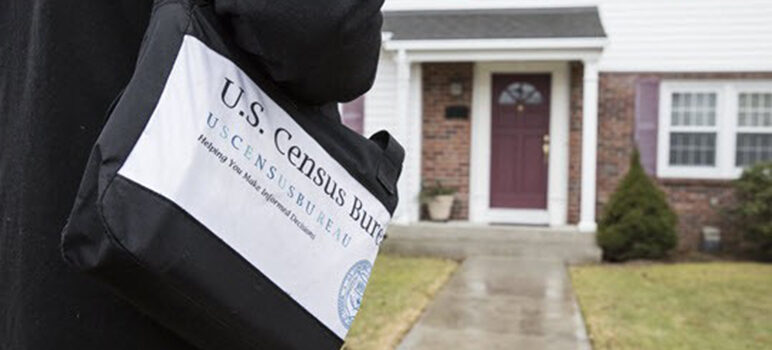Three Bay Area counties—San Mateo, Santa Clara and Contra Costa—recorded the highest “self-response” rates among California’s 58 counties as part of United States Census 2020, according to statistics compiled by the U.S. Census Bureau.
While an accurate census count helps ensure Americans get the federal resources and political representation they’re due, households that responded on their own to the census effort allowed regional census teams to spend more time reaching out to harder-to-find and harder-to-document populations.
“Every household that sends back a response or goes online, that’s a household we didn’t need someone to knock on their door, or go to where they live,” said Contra Costa County Supervisor Diane Burgis, who chairs her county’s Complete Count Steering Committee.
With 77.4 percent of Contra Costa County residents in the federal United States Census 2020 count self-responding via the mail or online to basic Census 2020 household information, that county placed third in California behind San Mateo County (78.6 percent) and Santa Clara County (77.7 percent).
The state average self-response rate for Census 2020 was 69.7 percent of households, and the national rate was 67 percent.
In Contra Costa, Clayton had the highest self-reporting rate, at 88.7 percent, more than 7 percent higher than during the 2010 Census.
The lowest rates in Contra Costa this year were recorded in the Iron Triangle neighborhood of Richmond (55 percent) and in the Sycamore neighborhood of Antioch (56.3 percent). Thoise numbers, too, represent small increases from 2010.
In Contra Costa County, the county’s steering committee along with 67 community-based organizations—schools, cities, interfaith groups, homeless outreach groups and others—collaborated on the Census 2020 count.
The high self-response rate, Burgis said, is thanks largely to the work of cities, agency and community partners, as well as “trusted messengers,” who all had connections to hard-to-count populations. And that mission, she said, was made more difficult by restrictions brought about by the Covid-19 pandemic.
Burgis said Contra Costa County had allocated $500,000 to local census efforts, substantially less than some other Bay Area counties.
“I think it brought a lot of people together, and it was a real good experience,” said Burgis, who noted some of the relationships created through the Census work should carry over to other segments of the county’s overall community outreach effort.
Data collected in each county will be forwarded to the U.S. Census Bureau, which in turn will prepare that information to formally give to the Trump Administration on Dec. 31.
The information will then be used to start the process of “redistricting,” the redrawing of political district boundaries based on population trends, starting in Spring 2021.
Burgis said political districts, from U.S. Congressional districts down to local districts represented by City Council members and school district board trustees, will be in play.


What’s up to every body, it’s my first pay a visit of this web site;
this web site consists of amazing and truly excellent data for readers.